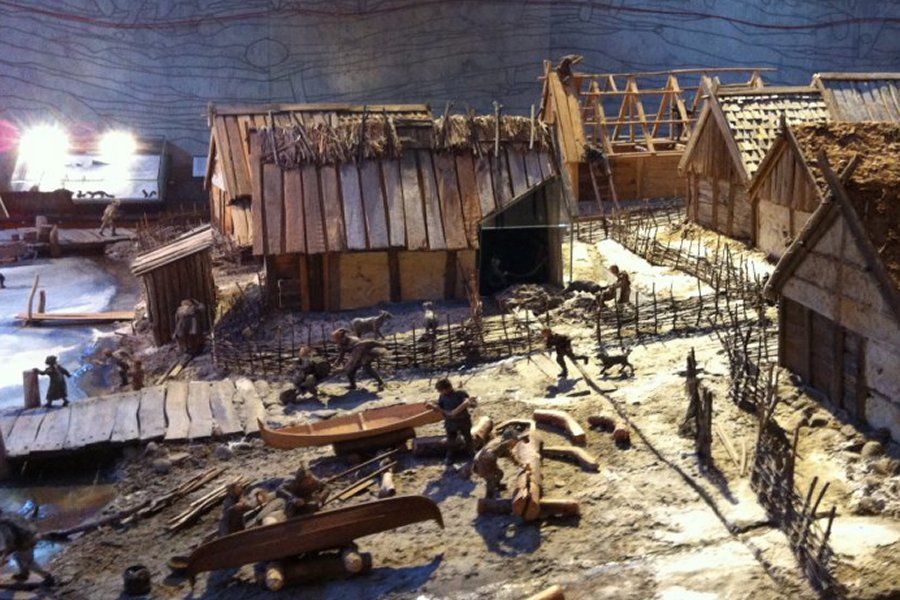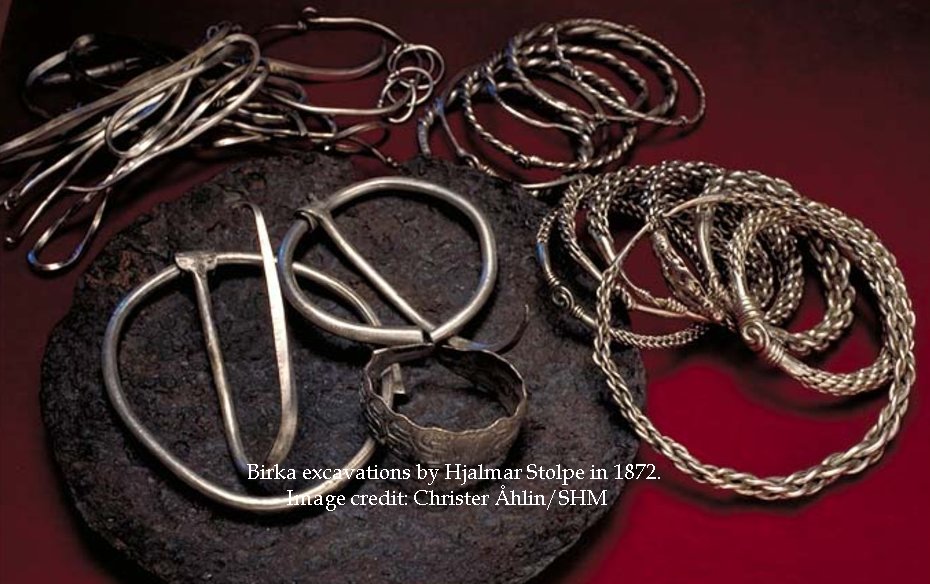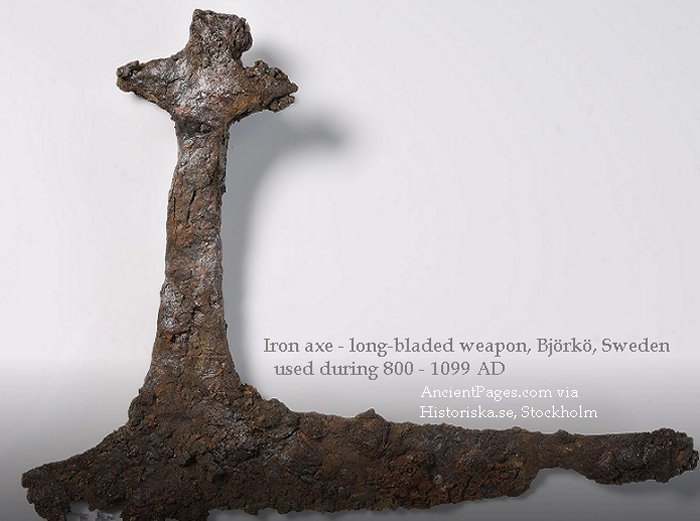Birka: Major Trading Center During The Viking Age
A.Sutherland - AncientPages.com - Established in the middle of the 8th century, Birka was an important trade hub for goods from Scandinavia, Central, and Eastern Europe, and the Orient.
It was also the site of the first Christian gatherings in Sweden, organized in 831 by Saint Ansgar, a nobleman, later Archbishop of Hamburg-Bremen, who preached and made converts for six months at Birka.
Birka spread over 32 acres and was located on the island of Björkö (‘Birch Island’) on Lake Mälaren, Ekerö, Sweden.
The town had a perfectly secured natural position and guarded by a large, 100 ft (c. 30 m) high mass of rock on its western side.
Additionally, there was a rampart of stone and earth about 20 – 40 feet (6-12 m) wide that ran in an arc from north, south, and east. Both structures protected inhabitants and enabled observations of approaching enemy ships for many miles in all directions. Birka was walled in the 10th century and there were timber watch towers all linked together by a palisade about 6 ft (1.8 m) high.
The place started as a marketplace for local commerce especially focused on the fur trade and within a period of 25 years, it experienced the rapid increase of Viking trade that through waterways surrounding Birka, spread to England, Frisia, to east and south.
The trading town was governed by a representative of the king, in fact, throughout the 9th century several kings are mentioned in Birka, but the extent of their control over this trading town is unknown. It is also unknown which king built the town.
About the 10th century, Birka had approximately 1,000 inhabitants. It had its own Thing, Viking law and order, based on the so-called Thing system. A Thing was the governing assembly made up of the free people of the community. Each community had its own independent Thing where all free Vikings could gather to make law, make decisions and resolve disputes.
The major source of Birka’s prosperity was the fur trade; ships transported fur to many countries in Europe and further to Caliphate in Baghdad. The Vikings traveled east into the Gulf of Finland and continued on the Volga River of Russia, or south to flourishing Gotland and Hedeby. Goods such as iron, horn, and amber were exchanged for silver coins, the coins were usually melted down and turned into jewelry; luxury goods such as silk, glass, and spices were also exchanged.
Strangely, the town was abandoned and ceased to exist as a manufacturing and commercial center around 960 AD but the island of Björkö was continuously inhabited. Another town, Sigtuna, located further north in Stockholm county became a replacement for Birka’s trade activities.
The reasons for Birka's decline are disputed but it has been suggested that the place was attacked and destroyed.
Birka has been excavated since the 17th century and plenty of precious artifacts have been found there over the years. The late 19th century excavations carried out at Birka by Hjalmar Stolpe (1841 – 1905), a Swedish archaeologist, and ethnographer, revealed about 1200 graves, a large number of coins, vessels, weapons, pottery, and silks, being evidence of commercial contacts between people at Birka and Eastern Europe and Western Asia. One of the most important discoveries made at Birka is a tiny dragon’s head, one of the most famous symbols of the Vikings.
Another intriguing discovery is the Birka Ring, an ancient Viking artifact that has an unexpected inscription of foreign origin.
Today, there are approximately 3000 graves of several different types, on the island of Björkö. The artifacts unearthed in them tell of an ancient Viking society with a strong hierarchy and big differences between classes and gender as well. These artifacts – especially jewelry – present evidence that some people of the Viking society remained Christians until their death; however, many of them continued to worship the old Norse gods.
It means that St. Ansgar's contribution to Sweden's Christianity was not particularly fruitful.
Written by – A. Sutherland - AncientPages.com Senior Staff Writer
Copyright © AncientPages.com All rights reserved. This material may not be published, broadcast, rewritten or redistributed in whole or part without the express written permission of AncientPages.com
Expand for referencesReferences:
Erikson, B. G. Kungen av Birka
Ambrosiani, B. Erikson, B. G. Birka vikingastaden
More From Ancient Pages
-
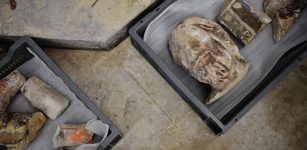 Surprising Discovery Of Ancient Sarcophagus At Paris’ Notre Dame Cathedral
Archaeology | Mar 16, 2022
Surprising Discovery Of Ancient Sarcophagus At Paris’ Notre Dame Cathedral
Archaeology | Mar 16, 2022 -
 Teutonic Knights – Facts And History About The Christian Military Order
Featured Stories | Feb 21, 2019
Teutonic Knights – Facts And History About The Christian Military Order
Featured Stories | Feb 21, 2019 -
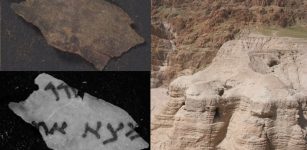 Hidden Text Discovered On Dead Sea Scrolls Reveals An Unknown Manuscript Is Still Missing
Archaeology | May 5, 2018
Hidden Text Discovered On Dead Sea Scrolls Reveals An Unknown Manuscript Is Still Missing
Archaeology | May 5, 2018 -
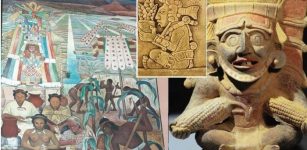 Yum Kaax, Mayan God Of Agriculture, Lord Of Woods And Caretaker Of Animals
Featured Stories | Jul 15, 2020
Yum Kaax, Mayan God Of Agriculture, Lord Of Woods And Caretaker Of Animals
Featured Stories | Jul 15, 2020 -
 Mysterious 3,200-Year-Old Hittite Map Of The Cosmos And The 12 Gods
Archaeoastronomy | Jul 2, 2021
Mysterious 3,200-Year-Old Hittite Map Of The Cosmos And The 12 Gods
Archaeoastronomy | Jul 2, 2021 -
 Ancient “Mona Lisa Mosaic Of Kadirli” – Discovered
Archaeology | Nov 16, 2020
Ancient “Mona Lisa Mosaic Of Kadirli” – Discovered
Archaeology | Nov 16, 2020 -
 Magnificent And Massive Great Wall Of India – Astonishing Ancient Structure Shrouded In Secrecy
Civilizations | Jul 7, 2015
Magnificent And Massive Great Wall Of India – Astonishing Ancient Structure Shrouded In Secrecy
Civilizations | Jul 7, 2015 -
 King Solomon’s Copper Mines In The Timna Valley Did Not Pollute Environment – Geochemical Surveys Reveal
Archaeology | Dec 23, 2024
King Solomon’s Copper Mines In The Timna Valley Did Not Pollute Environment – Geochemical Surveys Reveal
Archaeology | Dec 23, 2024 -
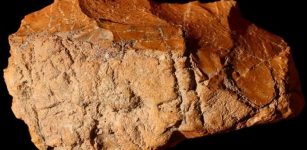 Traces Of Early Humans Discovered In Southern Iran
Archaeology | Sep 25, 2019
Traces Of Early Humans Discovered In Southern Iran
Archaeology | Sep 25, 2019 -
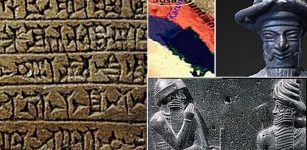 Susa: One Of The World’s Oldest Cities That Served As Capital Of The Elamite Empire
Featured Stories | Oct 14, 2023
Susa: One Of The World’s Oldest Cities That Served As Capital Of The Elamite Empire
Featured Stories | Oct 14, 2023 -
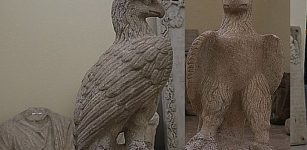 Two 2,000-Year-Old Marble Eagle Statues Found In Anatolian Hellenistic Temple
Archaeology | Aug 12, 2019
Two 2,000-Year-Old Marble Eagle Statues Found In Anatolian Hellenistic Temple
Archaeology | Aug 12, 2019 -
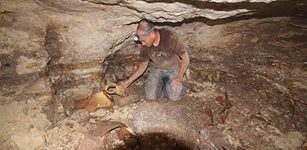 A 2000-Year-Old Jewish Settlement Near Bet Shemesh – Unearthed
Archaeology | Mar 30, 2017
A 2000-Year-Old Jewish Settlement Near Bet Shemesh – Unearthed
Archaeology | Mar 30, 2017 -
 Famous Runestone Is Not What We Thought And Re-Writes History Of The Vikings – Scholar Argues
Vikings | Jan 23, 2025
Famous Runestone Is Not What We Thought And Re-Writes History Of The Vikings – Scholar Argues
Vikings | Jan 23, 2025 -
 Pazzi Conspiracy – Failed Murder Attempt On Lorenzo de’ Medici Made Him Even More Powerful And Threw Renaissance Florence Into Chaos
Featured Stories | Feb 14, 2025
Pazzi Conspiracy – Failed Murder Attempt On Lorenzo de’ Medici Made Him Even More Powerful And Threw Renaissance Florence Into Chaos
Featured Stories | Feb 14, 2025 -
 Oldest Evidence To Date: 80,000-Year-Old Stone Blades Of Homo Sapiens Found In Jebel Faya, Arabia
Archaeology | Feb 19, 2025
Oldest Evidence To Date: 80,000-Year-Old Stone Blades Of Homo Sapiens Found In Jebel Faya, Arabia
Archaeology | Feb 19, 2025 -
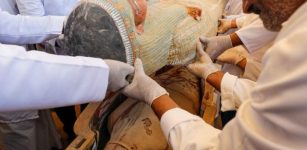 A Ptolemaic Mummy Reveals Evidence Of Dental Filling Used In Ancient Egypt
Archaeology | Aug 6, 2020
A Ptolemaic Mummy Reveals Evidence Of Dental Filling Used In Ancient Egypt
Archaeology | Aug 6, 2020 -
 Australia’s Submerged Indigenous Sites – New Discoveries And Study
Archaeology | Aug 31, 2021
Australia’s Submerged Indigenous Sites – New Discoveries And Study
Archaeology | Aug 31, 2021 -
 Archaeologists Will Soon Excavate Biblical Site Where Ark Of The Covenant Once Stood
Archaeology | Feb 23, 2017
Archaeologists Will Soon Excavate Biblical Site Where Ark Of The Covenant Once Stood
Archaeology | Feb 23, 2017 -
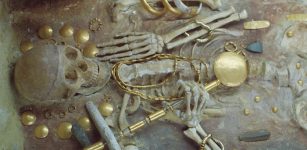 Archaeology Sheds Light On Why Some Ancient Societies Were More Unequal Than Others
Featured Stories | May 25, 2022
Archaeology Sheds Light On Why Some Ancient Societies Were More Unequal Than Others
Featured Stories | May 25, 2022 -
 America’s Native Population Arises From A Single Wave Of Asian Migration – Dental Anthropologists Say
Archaeology | Dec 19, 2023
America’s Native Population Arises From A Single Wave Of Asian Migration – Dental Anthropologists Say
Archaeology | Dec 19, 2023

